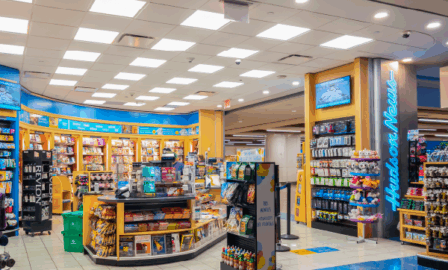Real Examples of Augmented Reality in Retail
Are there any current examples of augmented reality in the retail market today?
The answer is yes.
The technology underpinning augmented reality (AR) is readily available. In the past five years, AR has sparked the imagination of consumers, brands, and retailers. Analysts predict that by 2025, the AR market will reach 32 million users and boast $1.6 billion in revenues—in retail alone. “[I]t can be integrated with native applications today,” Clarkston’s Sean Burke wrote in a recap after seeing the technology in action at the National Retail Federation’s BIG SHOW 2017. Using a simple smartphone or tablet, today’s retailers have the capability to blend the digital with the physical. Retailers are using the technology in new and innovative ways. Three examples of augmented reality in retail are highlighted below.
Three Examples of Augmented Reality in Retail
Turn your Home into a Showroom
Think about an item that you recently bought online. Odds are it wasn’t a couch or a dresser. Although online furniture sales are increasing, online sales within the industry still lag others. Most people don’t feel comfortable ordering furniture without seeing it in person. Advances in augmented reality are looking to change this. Wayfair, the online home goods store, recently released WayfairView. The smart phone application allows users to select different items from the store’s catalogue and project 3-dimensional versions of them directly into their room. Shoppers can now select a table and see it in their home, at scale. “WayfairView should give people more confidence to buy from us without worrying whether something’s the right size,” Mike Festa, the director of Wayfair Next, told MIT Technology Review.
Transforming the In-store Experience
Despite the increased interest in creating memorable in-store experiences, most retailers are failing at doing so. A recent survey revealed that over one-third of shoppers “felt nothing” after shopping at brick and mortar stores. This daunting statistic doesn’t mean there isn’t an opportunity for enterprising retailers. In fact, 86% of respondents liked “experience stores.” Augmented reality could be the tactic that allows retailers to provide a differentiated experience. Numerous retailers are pushing the transition forward.
In 2009 Lego launched a Digital Box pilot program. It allowed customers to scan boxes of Legos and see 3-D projections of the finished models. In 2010, it rolled out the displays to all Lego stores worldwide. In 2016, Uniqlo began offering smart fitting rooms. Customers try on a pair of clothing in front of a specialized mirror. They can then cycle through different colors of the clothes on the mirror and text their friends for their opinion—without changing outfits. Luxottica and Neiman Marcus recently launched a similar program for glasses. The mirror takes pictures of customers with potential glasses and allows them to conduct a side-by-side comparison before purchasing.
Creating Opportunities for Unique Partnerships
One of the challenges around implementing augmented reality into the retail industry is that it generally isn’t a core competency. You may start to ask yourself if it should be for your business with Industry 4.0. But, for today, the potentially large opportunity means many mature technology firms are looking to partner with established retailers. In 2015, Microsoft released HoloLens, an augmented reality headset that can be optimized for retailers. Lowe’s was an immediate adopter, launching a pilot that allows customers to visualize the finished designs for their home improvement projects. Volvo is using the technology to allow customers to see new features and customizations on potential car purchases. In the future Microsoft envisions the technology will allow retailers to provide customers with a completely customized experience. Not to be outdone, Google has recently partnered with BMW and Gap, allowing for completely virtual showrooms and avatar based clothing shopping.
Should augmented reality be a distinctive capability for your organization?
If you have found this information valuable and would like to receive future insights about the retail industry, subscribe to our insights below.
Subscribe to Clarkston's Insights
Contributions from: Eric Gardner, Michael Onore



